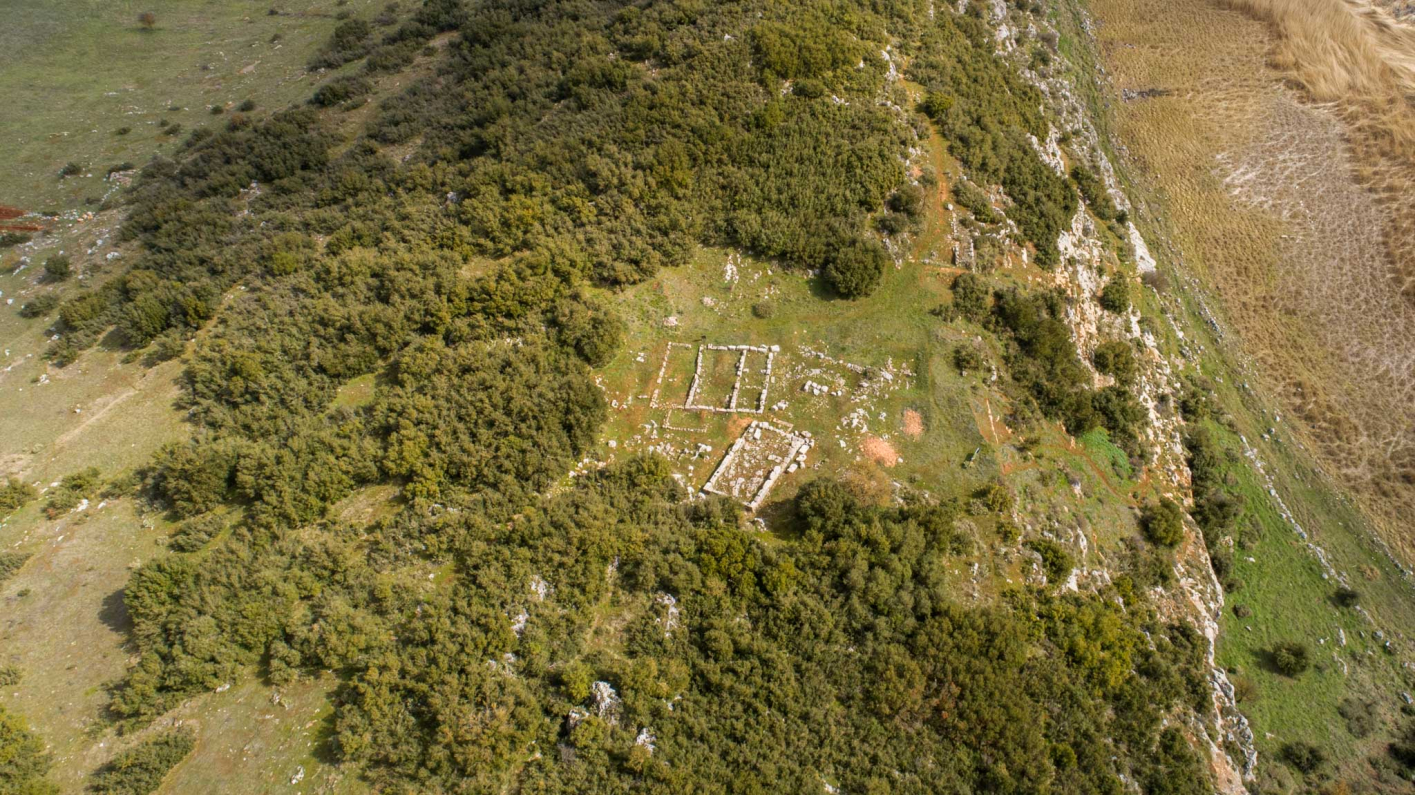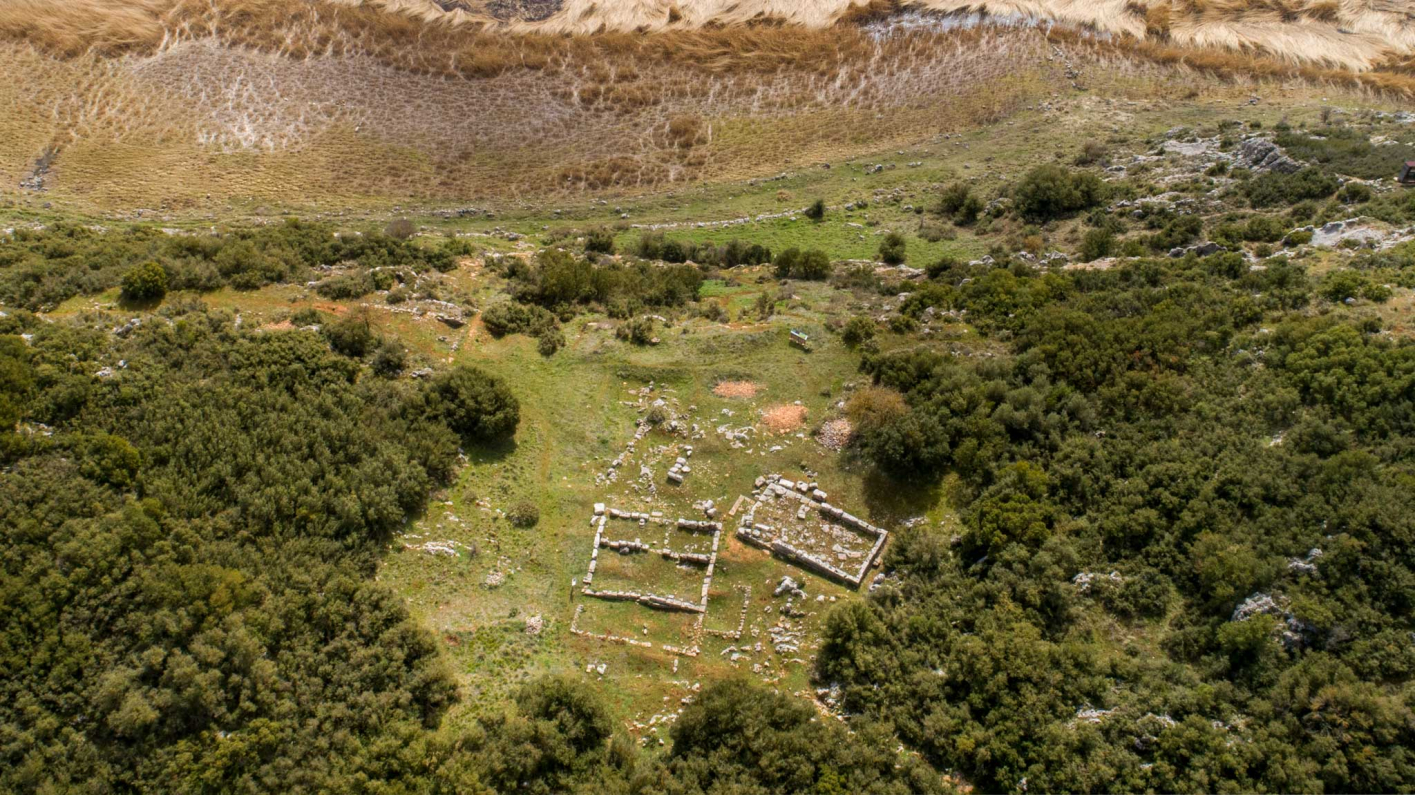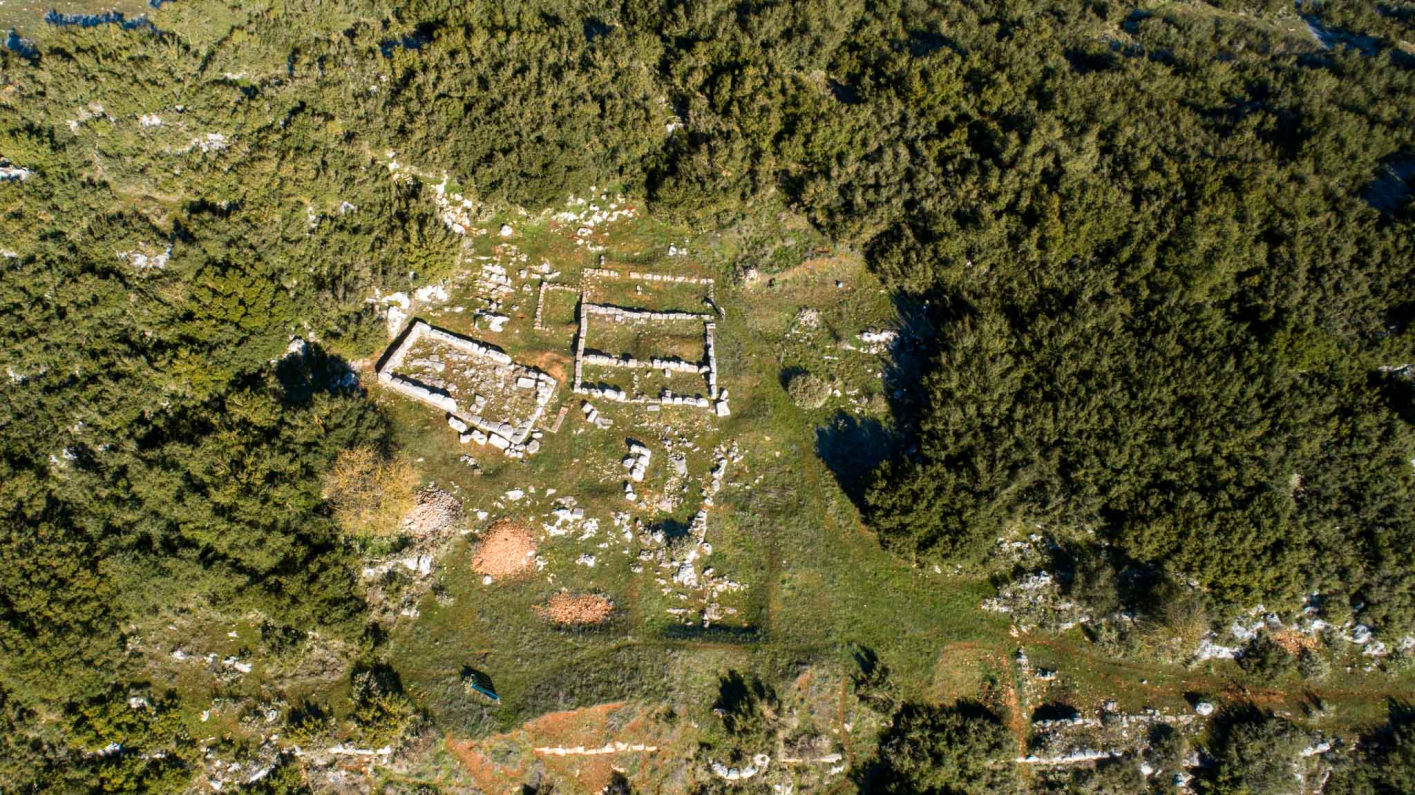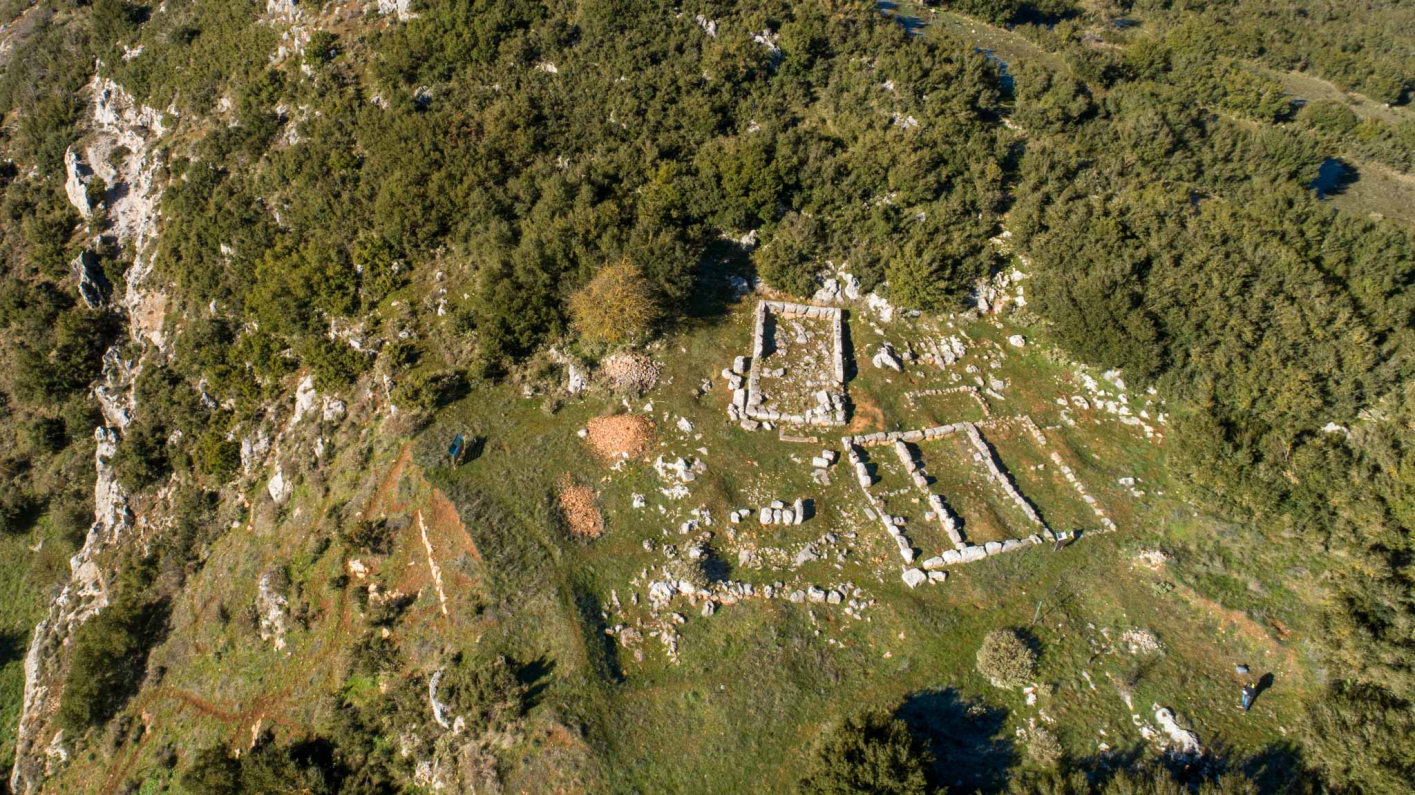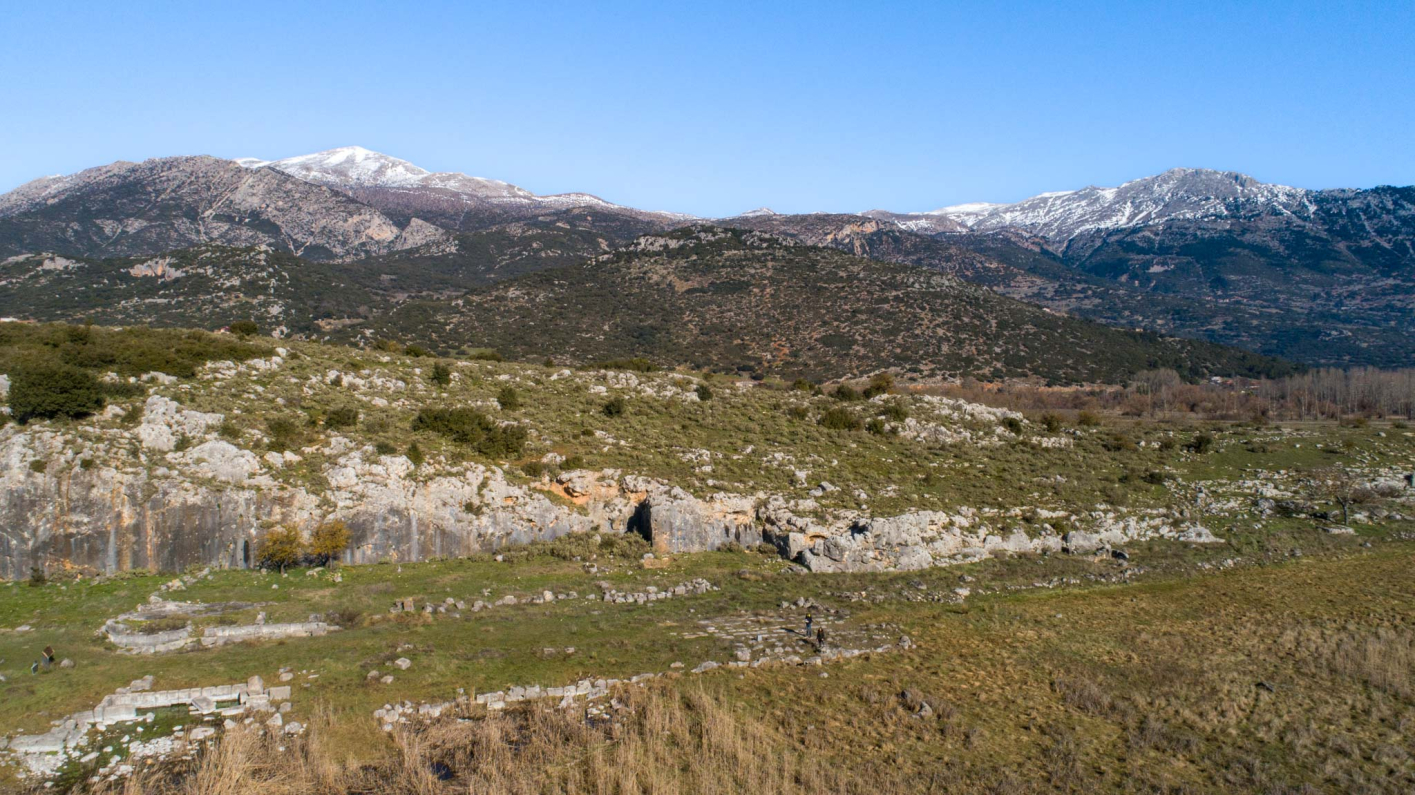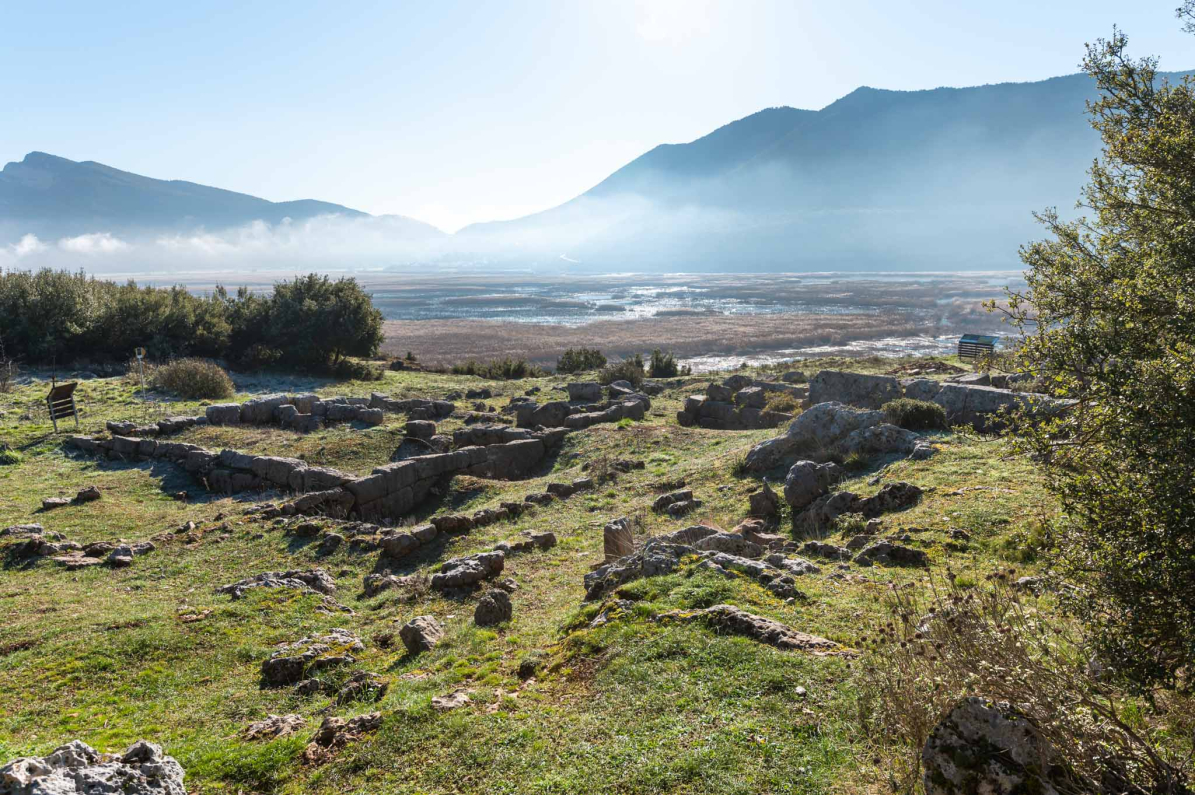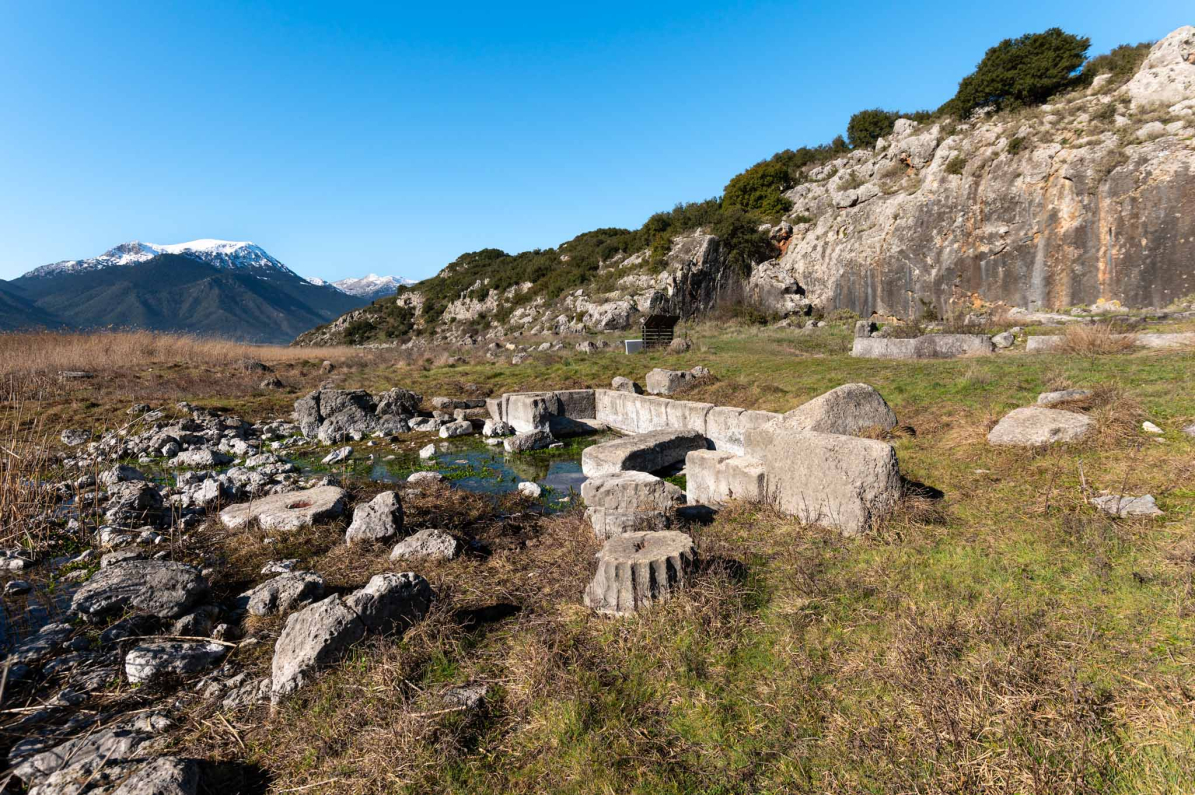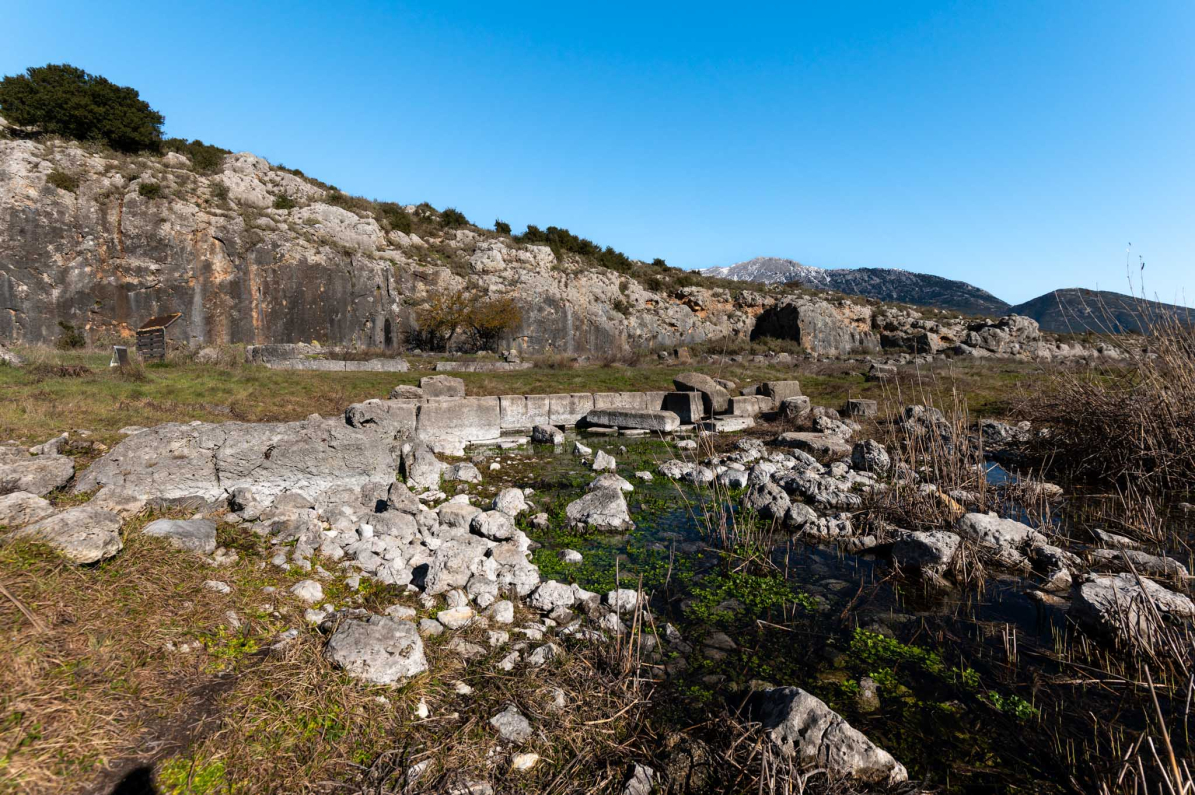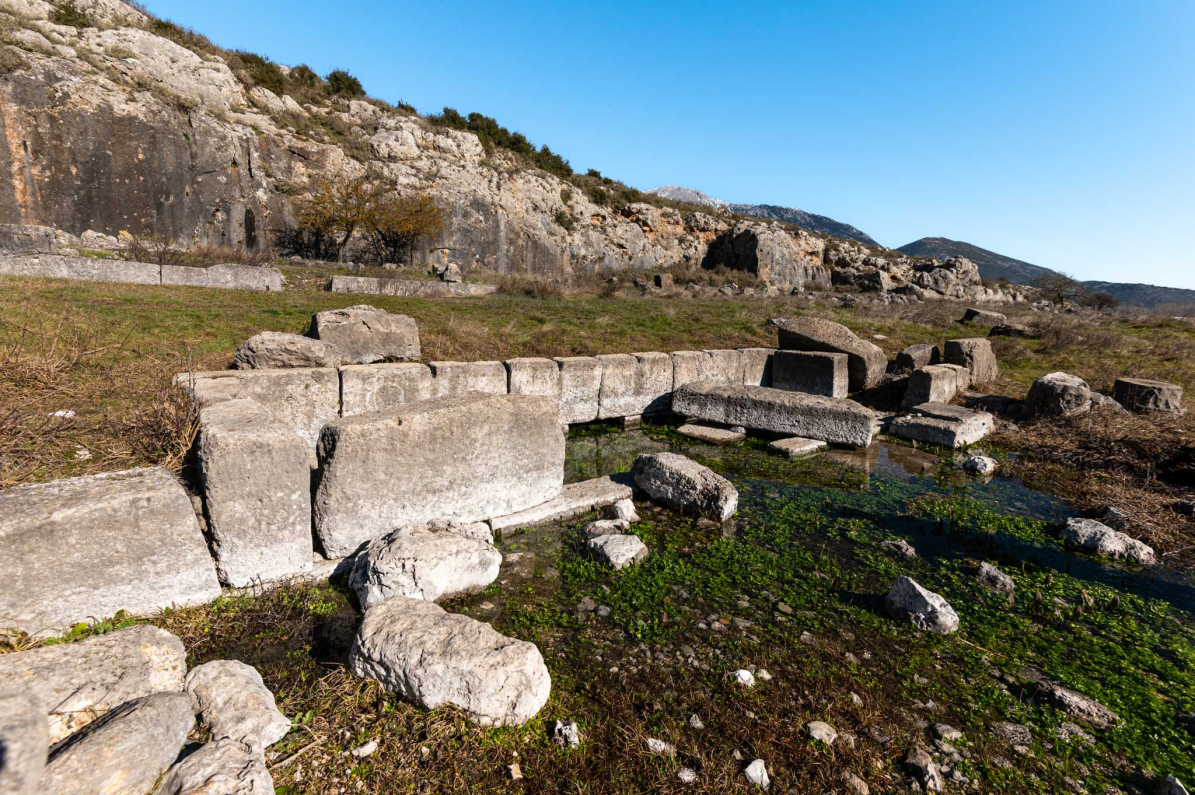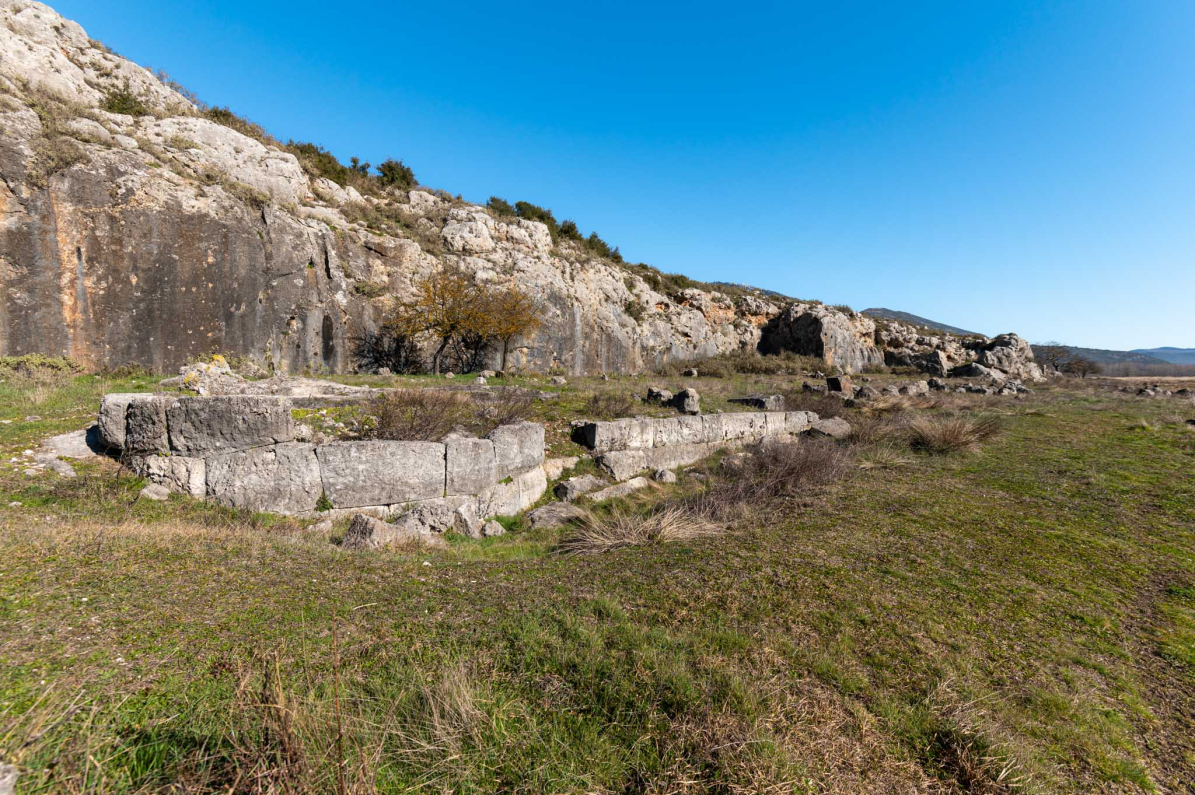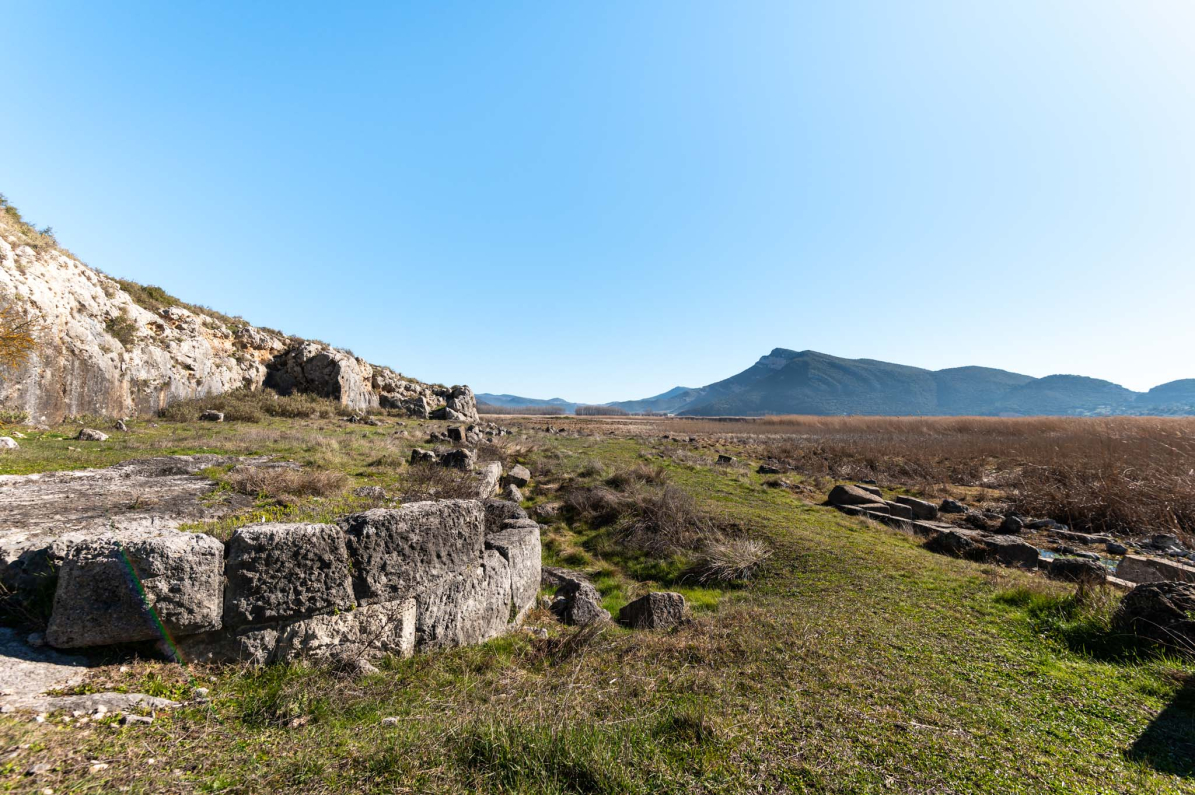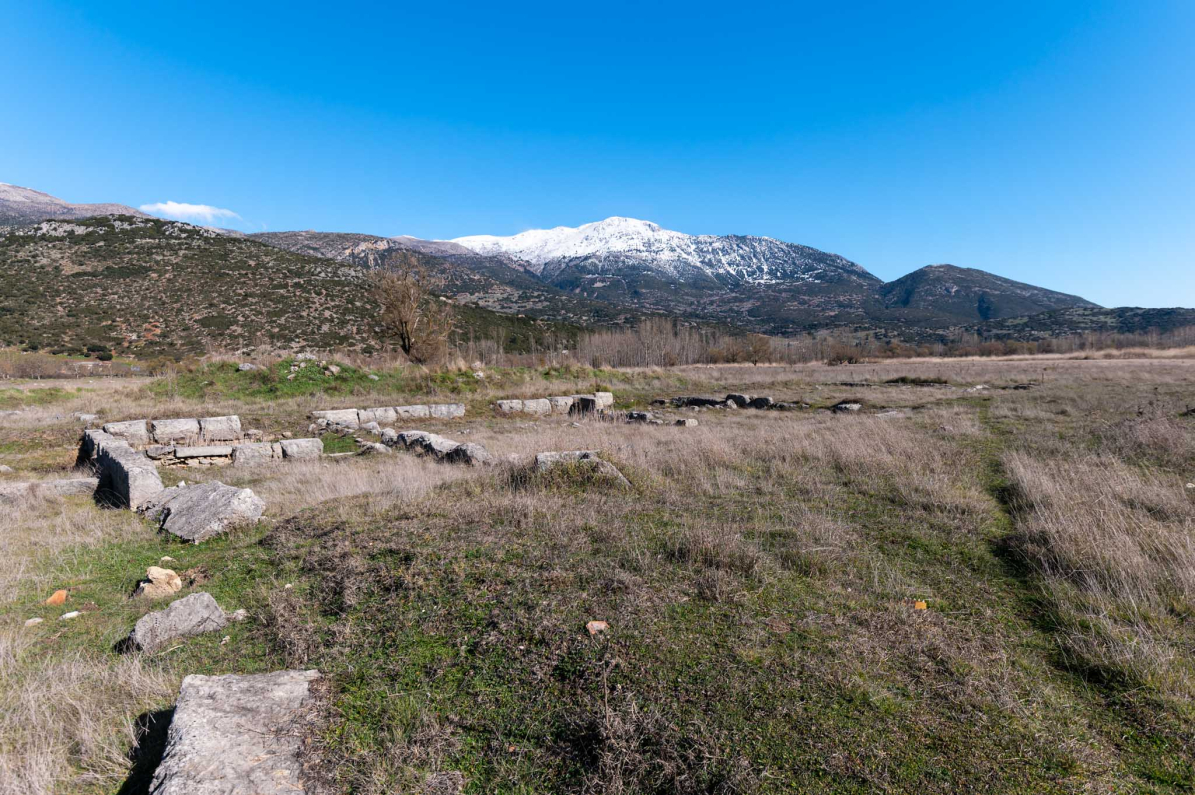On the northern fringes of today's Stymphalia Lake, east of the central provincial road and the modern Stymphalia Environmental Museum, lie the ruins of the ancient city of Stymphalos. Although its establishment is archaeologically dated to the Archaic period, its origin is steeped in myth. The city was named after its mythical first settler, Stymphalos, and became a reference point for many myths, legends, and stories, primarily related to the waters of the area. The most famous myth is, of course, that of the Stymphalian Birds, though it does not directly involve the ancient city. Another myth, however, involves the conflict between Pelops and Stymphalos, which directly concerns the settlement. According to this myth, in his quest to conquer the entire Peloponnese, Pelops found himself in conflict with the local king Stymphalos. After several failed attempts to conquer the area, Pelops resorted to a treacherous and impious trick. He invited Stymphalos to a peace banquet, where he killed him, dismembered his body, and discarded it. As punishment for this crime, the gods cursed him with a prolonged drought! The crops were destroyed, animals died, and people struggled to find even small amounts of poor-quality water. The problem was eventually resolved by an oracle from the Delphic Oracle, which instructed Pelops to convince the most pious of men, Aeacus, to pray. But who was Aeacus? Aeacus was the son of Zeus and Aegina, the daughter of Asopus, the river that still flows from the same karstic lands east of today's lake, carrying the waters of Stymphalia to the coastal Corinthia! The theme of water, even through mythological references, is fascinating!
During the Mycenaean era, specifically in the 13th and 14th centuries BC, the area was inhabited by populations with advanced engineering knowledge, who attempted to drain much of the lake and secure fertile lands protected from floods. The city is mentioned in the Catalogue of Ships in Book II of the Iliad, as a vassal of Mycenae and Agamemnon, alongside other Arcadian cities, led by Agapénor. The irrigation works of the inhabitants of that time, some of which are still visible today, are thought to have included water barriers, at least two, which restricted the waters of the lake to the northwest and created two polders of cultivable land on the slopes of Mount Apelavros, east and west of today's lake. The Stymphalians are mentioned in Xenophon's "Anabasis" around 411 BC, where the local general Sophaenetus is mentioned, leading 1,000 men. In the same work, the officers Agasias and Aeneas, Stymphalian soldiers, are praised for their courage and military virtues.
During the Peloponnesian War, Stymphalos became a target of Athens, and the Athenian general Iphicrates attempted to conquer it by blocking the sinkholes to flood the plain and the city, but unsuccessfully. During the Theban campaign in 370 BC, the Stymphalians sided with Epaminondas, but a few years later, they left Theban hegemony and joined Sparta. Under Macedonian rule, Stymphalia followed the fate of the cities of the Peloponnese, and after the death of Alexander the Great, it saw successive Macedonian garrisons. In 234 BC, Stymphalos joined the Achaean League under Aratus of Sicyon, and followed the fate of Corinth in the mid-2nd century BC when it was destroyed by the Romans and handed over to Roman control. In 218 BC, a significant battle is recorded on the slopes of Apelavros near the sinkhole of Yidomantras, between Macedonians and invading Eleans, which ended in a major victory for the Macedonians. It is also recorded that 100 Eleans were sold as slaves in the markets of Corinth, and the proceeds were taken by the Stymphalians.
Today, a large portion of the archaeological site is submerged in the waters of the lake. The site, initially excavated by Anastasios Orlandos between 1924-1930, dates to the late classical period and includes a gymnasium and a theater. In recent years, excavations by the University of British Columbia revealed that the city was built according to the Hippodamian system – a city layout oriented to the four cardinal points, with wide streets and surrounded by a strong wall. On the southern side of the wall, the Gate of Fliounta is found, an excellent example of defensive architecture. According to the findings of the excavations, the main city extended to the east and north of the acropolis of Stymphalia. The houses included an internal courtyard with a well and storage spaces. The archaeological digging revealed the foundations of public buildings, as well as a large structure with a circular wall and a temple, as well as the market's enclosure. The theater was located on the southern side of the acropolis, carved into the rock, but due to the friability of the stone, not many seats survived, only its stage. Within the archaeological site is the Stymphalian Fountain, which has continuously provided its precious water from antiquity until today. From this fountain, in the 1st century AD, the Hadrianic aqueduct began, traces of which can still be found in the area, and which, even back then, carried the waters of the region to Corinth.
Finally, the research revealed evidence of the military prowess of the Stymphalians, making them sought-after mercenaries. This is further supported by the discovery of a coin from Carthage and a vessel from the 2nd century BC found in the Jerusalem area. Access to the archaeological site, when the water level permits, is relatively easy, following the path located west of the Environmental Museum and the provincial road, which descends to the shores of the lake.

